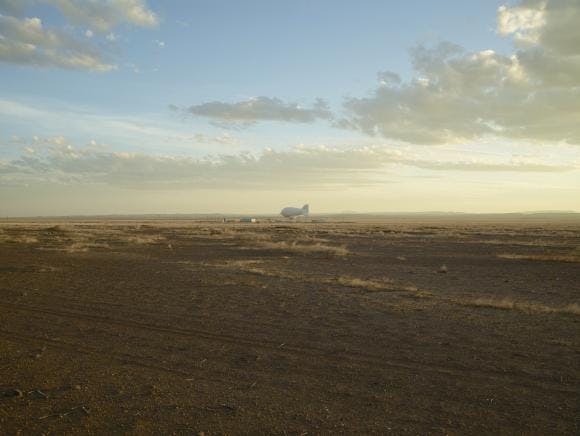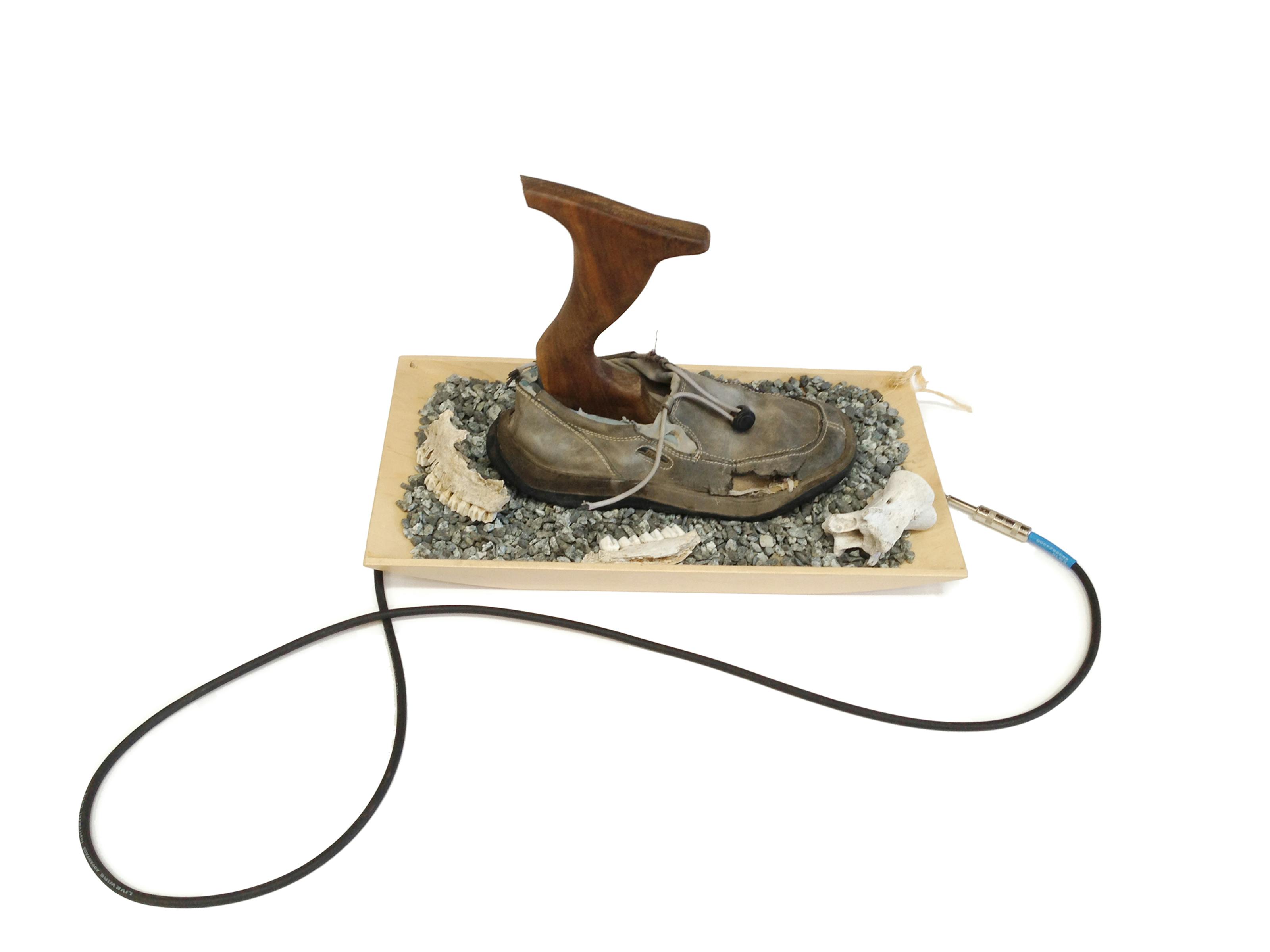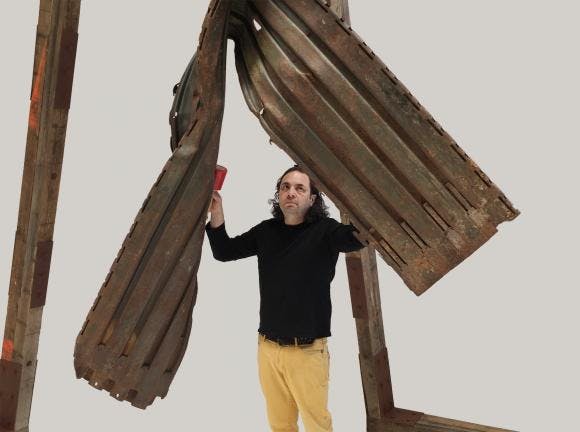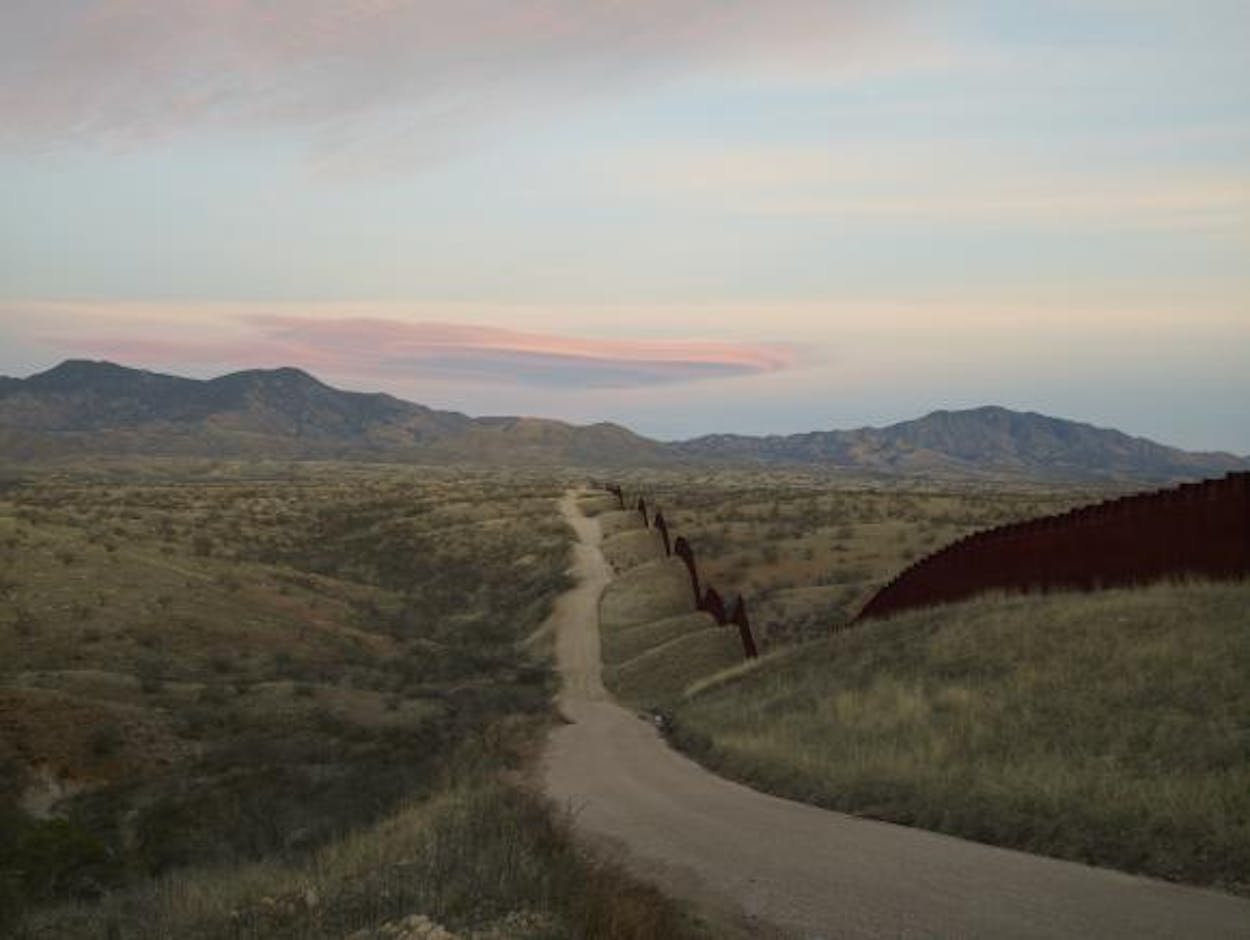The miles of winding walls along the U.S.–Mexico border signify a complex history between the two countries. Following the wall, you’ll stumble across slashed water bottles, pocket bibles, pendants of Jesus Christ, and migrant graves marked by white rocks formed into a cross.
Landscape photographer Richard Misrach, who has been closely observing the increased security at the border and the largely desolate borderlands since the mid-aughts, was inspired to capture these sights. Fascinated and troubled by the increased presence of the U.S. Border Patrol and installation of a large, imposing wall, Misrach pulled out his 8×10 camera.
Meanwhile, Guillermo Galindo—a musician, composer and sculptor—was collecting objects from along the border to create instruments, sculptures, and scores inspired by what was happening. After meeting at a pop-up art installation in San Francisco, the two artists collaborated on their work. Sound and sight interweave in their project, “Border Cantos,” an 84-piece exhibit—42 from each artist—currently at the Amon Carter Museum in Fort Worth.
Ever since President George W. Bush signed the Secure Fence Act in 2006 and 670 miles of steel and fence sprouted at the border, there’s been an influx of Border Patrol agents, drones, and heat and sensor technology. “Once we started building, that’s what caught my attention,” Misrach said. “I couldn’t help but think of the wall as a monument or an anti-monument.” He contrasts the wall’s construction with the Golden Gate Bridge and the Statue of Liberty, which Misrach said represent an American welcoming and openness to foreign partnerships and peace. The wall, however, “felt foreign.” “The new walls looked slick, formal, imposing and strangely eloquent,” he said. “It had a dark, fifteenth century Gothic feel. It did not feel American.”
Misrach has been working on his larger project, “Desert Cantos”—a collection of landscape portraits of the American desert—since 1997. In both collections, Misrach organizes his photographs into cantos, a literary structure utilized by Lord Byron and Ezra Pound that subdivides epic poems into parts. The cantos—The Wall, The Effigies, Target Practice, Cutting for Sign, Against the Wall, Agua, The Artifacts, and The Other Side—serve as chapters in his collection with Galindo.

Galindo’s contributions to the exhibit recreate an aural and visual experience of the border. Galindo uses instruments designed to connect the audience with people where the U.S. and Mexico meet. “They speak for those who don’t have a voice and to those who want to listen,” Galindo said. “I hope the project resonates with the tragedy of injustice.”
As Misrach traveled photographing the border he collected objects to ship to Galindo. Galindo’s “Zapatófono” repurposes a torn shoe Misrach found and, by shuffling it across a wooden tray with rubble on it, recreates the sound of an immigrant shuffling through the desert. For “Fuente de lágrimas,” or the fountain of tears, Galindo takes a pale blue water barrel labeled WATER, mirroring the first image Misrach captured for this collaboration, and places plastic tubes inside the bullet holes left by Border Patrol. To play the instrument, you fill the barrel with water which, when falling through the tubes, drips to make a steady clink, clink noise on tin beneath it.

Unconcerned with creating a mellifluous sound, Galindo instead focused on hearing the reality of the border. Pieces made up of steel or items from Border Patrol—like “Ángel exterminador,” a large mangled piece of iron from the border wall hanging from an angular wooden structure, or the empty bullet shells and abandoned soccer ball used in “Piñata de cartuchos”—create harsh, disconcerting sounds, while the works such as “Ropófono,” which amplifies the sound of clothes rotating around a loom, are softer in sound and emanate the sound of homes.

“Border Cantos” received an unprecedented response at its debut venue, the San Jose Museum of Art, in California. Premiering last February and running until the end of July, “Border Cantos” was one of the most successful exhibits at the SJMA, said Rory Padeken, assistant curator at SJMA and curator of the exhibit. “The project definitely touched a lot of people,” Padeken said. “We hear stories from our gallery teachers who teach students from grades 5 to 12. When shown pieces from the exhibit, some wept in front of certain images.” Another woman in her forties was brought to tears upon seeing Misrach’s photograph of her childhood home: an humble blue house in the Arizona borderlands.
“Museums are public spaces, and it’s important for them to not only share the beauty of our world but to engage the public consciousness, and this is a show that does both,” said John Rohrbach, senior curator of photographs at the Amon Carter. “There’s certain beauty in desert environment that it recognizes, but it also engages a key cultural issue.” Still, “Border Cantos” refrains from pointing fingers. “Border Patrol does tremendous, important work, and this show doesn’t castigate them or proclaim a right or wrong side in the national debate,” Rohrbach said. “It says, ‘This is ongoing issue and no matter what side you’re on, we all need to pay attention.’”
For Misrach and Galindo, the ability to present the border as more than a political battle line was paramount to “Border Cantos.” “The magic of art is that it speaks to the soul and it doesn’t have to give facts and statistics and numbers,” Galindo said. “Politicians are motivated by polling and other factors. Artists have a larger vocabulary. Poetry is art with words, and speech by politicians is not poetry.”
“Border Cantos” will run at the Amon Carter until December 31, is free to attend, and will be presented in both Spanish and English.






